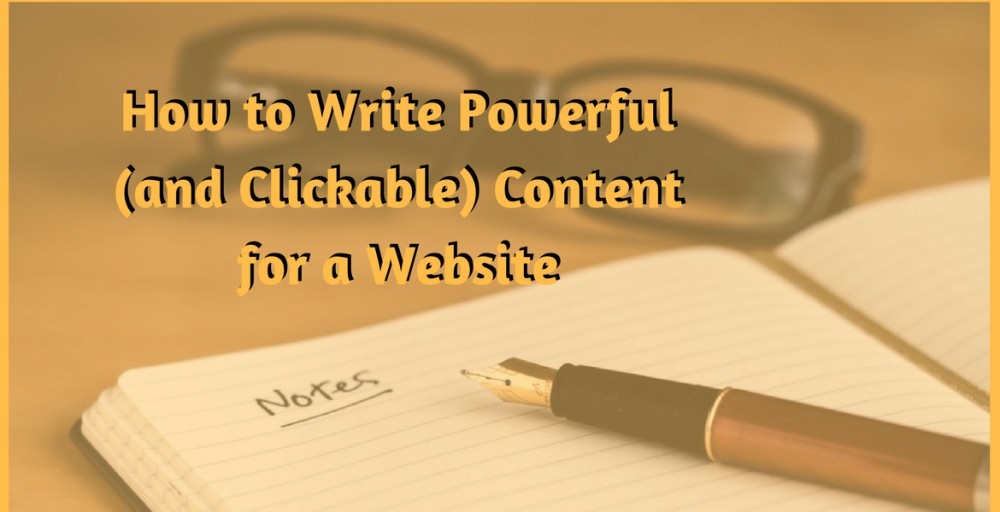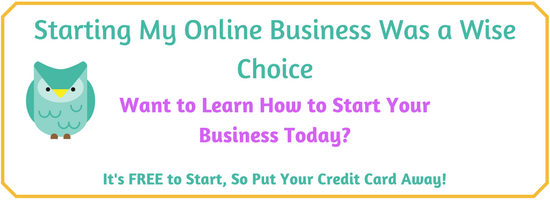Does your website offer well-crafted, engaging, and compelling content? In 2018, content is still king! But the fact is, many new bloggers seek guidance on how to write content for a website because they find content development to be extremely challenging.
I understand the initial struggle….
Most successful bloggers admit (with some chagrin :)) that their first stuff was not their best. And yet, if your objective is to build a prosperous brand, the path is clear.
So, read on as we traverse that path.
How to Write Content for a Website That Gets Read
My mission with today’s post is to introduce actionable tips you can implement immediately to create more engaging copy for your website.
Here are 6 time-tested best practices (and some exceptional resources) to help you on your way.
Add Value By Providing Solutions
First and foremost, we must remember that real people are on the other end of that Google search query that brings up the article on our site. Each person who arrives at your blog has a specific question and is seeking an answer to a question or a better approach to dealing with a problem.
Do you have an answer?
Blog posts that are clicked and read offer more than theory or vague discussion of a topic. The best posts are communication vehicles that contain practical guidance and action items that viewers can use and immediately apply. Consumers particularly value product and service reviews.
Moreover, bloggers should never be afraid to express a well-formed opinion that’s supported by the facts. Indeed, your blog readership is actively seeking credible opinions and recommendations!
Does your website offer readers the value they’re hunting?
Using Keywords is a Given
The members of every niche market have hundreds or even thousands of questions. And, they use specific language, words, and phrases to pose their queries. You can draft a fabulously informative article. But, if it doesn’t effectively target the terms your audience is typing into that search bar, it probably won’t be found.
Sadly, there are many “lonely” blog posts on the Internet!
My starting point is a hot topic within my niche. Finding those topics is pretty easy if you hang out in the same forums your audience frequents. For example, Quora is one of my favorite haunts. Some other great options for generating content ideas are Google Alerts, reading competing blogs, and comments left on my blog by readers.
So, I gather lots of ‘core’ themes and organize ideas into high-level categories. Then, I get down to business and gradually hone in on a target keyword by taking an approach that I like to call the 50+/50- rule.
Let me explain….
My ideal keyword is one that receives more than 50 queries each month. In other words, there is a definite interest in the subject matter. Additionally, I seek out a phrase that is currently targeted by less than 50 competing websites. By limiting my competition, I have a far better chance of ranking in the search engines.
Focus on Long Tail Keywords
Long tail keyword phrases contain 3 or more words and tend to be fairly specific. Don’t be tempted by shorter terms that often have far greater (sometimes huge) amounts of traffic. The competition for such phrases is typically intense. Unless you have a well-established authority site, you don’t have the proverbial snowball’s chance in hell of ranking in Google.
Give yourself a fighting chance of hitting page one by choosing “low-hanging fruit” that has some regular traffic but less competition. As you build out your site, you’ll have lots of these keywords, your search engine rankings will improve, and your cumulative traffic will grow nicely.
Make sense?
Let me share a quick example of research I’ve performed in Jaaxy recently. I’ll tee this up by telling you I’ve been contemplating a new website about Drones. Yeah, it surprised me too, but I have a neighbor who’s positives obsessed with the things and constantly wanting to show me his latest “toy.” They are fascinating!
So, I performed a search on “the best camera drones” and here are my results:
I quickly spotted several possibilities that would meet my criteria regarding both traffic and competition (or QSR). QSR stands for Quoted Search Results and indicates the number of other sites currently targeting the exact phrase.
Hmmm….food for thought! 🙂
Where to Position Your Keyword “Gems”
Once we’ve found attractive terms, proper placement of keyword phrases is an essential aspect of a sound SEO (search engine optimization) strategy. You’ll want to include these gold nuggets in your title, the first paragraph of your content, the alt text attribute for an image, and perhaps somewhere in your conclusion.
The locations identified above are sufficient to communicate your intent to Google and the other search engines. They now know exactly what your article is about. Never overdo it! Less is more when it comes to target keywords. From there, you will want to write naturally and cover your subject matter in a comprehensive fashion.
Feel free to include synonyms and related phrases (known as LSI keywords). Such terms are a natural outgrowth of topical expansion rather than annoying repetition that might be perceived as “spammy”.
Keep Your Writing “Active” and Conversational
Do you have a picture in your mind’s eye of what your ideal reader might look like? I encourage you to work on that because it really helps. If you can conjure up an image, it becomes increasingly easier to write as though you’re having a chat with a friend or neighbor.
Remember, you’re not writing an academic paper that’s only going to be read by some bored teacher (who doesn’t have a choice). You’re also not drafting a report for your boss who just wants the bare facts. Bore your Internet audience and they’re gone!
Try to use active rather than passive voice because it’s viewed as plain English and just easier for readers to follow. Incorporating transitional phrases, more colorfully known as “bucket brigades,” can also boost readability and stave off boredom.
Beautify Your Content Design
Study after study loudly proclaims the merits of a beautiful post design. We all loved picture books as kids, and for most of us, visual images still have a powerful draw. Breaking up your content with relevant imagery is a good thing! Most visitors respond well.
But beautifying your copy is much more than attractive images, right?
Don’t most of us also appreciate writers who “chop up” their paragraphs and include lots of whitespace? I know I’m repelled when I click on a post and see giant blocks of dense text. I like to scan first for the tidbits that seem most pertinent to my issue. It’s all about me, after all 🙂 Then I may go back and take a deeper dive,
So, try this:
- Chunk your paragraphs into no more than three or four sentences.
- Single sentence paragraphs are even okay to capture the reader’s attention or as lead-ins to sections.
- Use bullet points or numbered lists wherever appropriate.
- Add multiple subheadings,
In short, make your text readily scannable!
Build Internal Links
Building internal links to related posts is a best practice on multiple fronts. It’s great for readers because they can dig further for more detailed data that meets their needs. Customer satisfaction is what your blog is all about. As an added benefit, keeping folks onsite longer will improve your bounce rate.
Finally, the search engines love to see evidence of related, in-depth content because it contributes to a more positive user experience.
So, don’t forget to include links to all the good stuff you have to offer!
Use Attention Grabbing Headlines
This tip could have easily been first but in no event do we want to leave it out. Any time your blog post shows up in the SERPs (Search Engine Results Pages), it’s cause for celebration. But, you never want Internet users to gloss over your title in favor of one with more pop and sizzle.
The best blog post headlines evoke curiosity and draw in readers. Yes, your headline should contain your keyword, but it needs more juice. By the way, Google thinks so too! You may be penalized for a drab title regardless of how popular your keyword is.
Go the extra mile and take advantage of a blog headline generator to create a catchy title. Coschedule’s Headline Analyzer is a free resource that will help make your headlines more engaging and improve your click-through rates. There’s science behind the tool’s analysis and suggestions.
For example, studies show:
- Reader’s respond well to question-type headlines (like how to,,,,).
- List titles like X reasons/tips/ways, etc. are irresistible. It seems we all feel compelled to make sure we know all of them,
- Emotional words are powerfully influential.
Headline Analyzer computes a score but ultimately uses a simple red, yellow, or green approach to rating your title suggestions. Sometimes it can take a few tries to achieve a green result, but it’s worth the effort.
Check out the result for the post you’re reading:
And here’s another result from a recent list-type post I published with good results:
What do you think? Could your headlines stand some tweaking?
Wrapping Up
I sure hope you found value in these tips on how to write content for a website. I communicate and interact with prospective new website owners all the time who have an overwhelming fear that they can’t write a blog post. And, it’s just not true.
Like virtually all skills or activities in life, it just takes a bit of practice. Naturally, you’ll have to do your research first unless it’s a subject matter you’re already intimately familiar with. But we have the Web as a vast font of information on virtually anything, right?
I recommend you jump right in and begin the practice of writing for a set period of time (even 30 minutes) every day. Pretend you’re having a conversation with your best friend and explaining a point to him or her. Then, enjoy the amazement at how quickly writing becomes second nature.
But if you feel like you need more coaching in this arena, content writing is one of many website building skills that’s covered very thoroughly in the training I’ve received through Wealthy Affiliate. The wealth (pun intended :)) of information that is available through this online marketing platform is astounding.
Why not join us and experience the benefits first hand. It turns out, you have nothing to lose because you can join for free as a Starter Member with nothing more than an email address. If that sounds like something of interest, just click the banner below and start on your way.
Either way, I wish you great success in developing engaging and compelling content for your website!
Over To You
Did I leave out something you feel this article should include? Do you have questions I failed to address? Drop me a line in the comment section below, and I’ll get back to you promptly
Like It? Please Share It!








Hi Linda,
Writing does not come easy to me. I liked all your suggestions, they are helping me to do it in steps. If I look at it as a whole, it is way too daunting of a task. Step by step, slow and steady wins the race. Right!
Irene
Hi Irene,
So glad I could help. You can do this! Many people are not comfortable writing but it’s one of those skills that improve with practice. Remember to keep it conversational. Picture a friend across the table that you’re chatting with and it will help a lot. Good luck and thanks for stopping by!